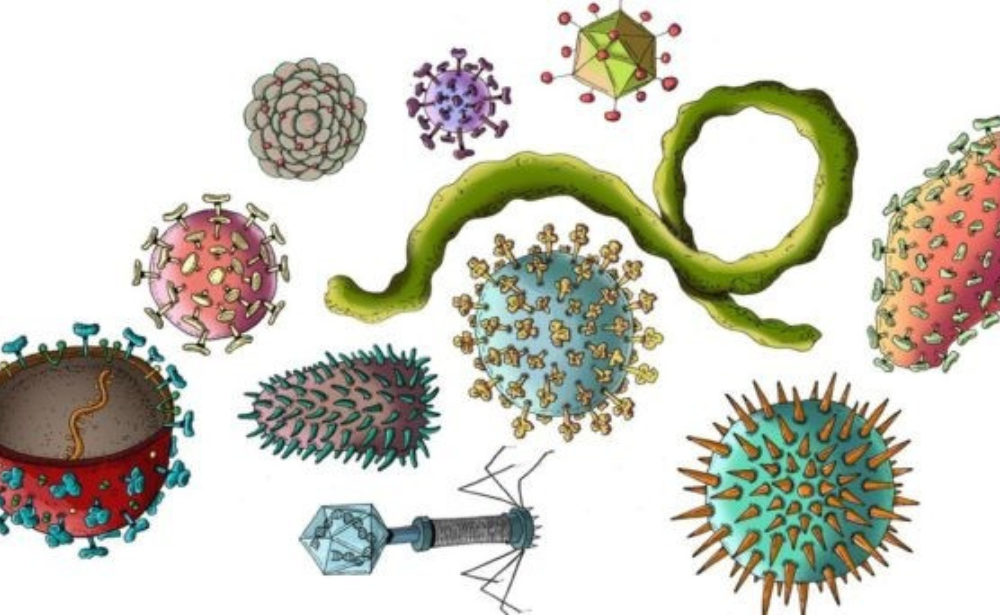Before the 18th century, it was believed that there was a magical power in the world that could turn fruit juice into wine or make a healthy person sick or even die within a few days. It wasn’t until Antony van Leeuwenhoek used a homemade microscope to observe some “small creatures” in the rain that people became interested in these little creatures. These little creatures are what we now call microbes.
According to the widely accepted classification, microorganisms can be divided into five categories: bacteria, fungi, viruses, protozoa, and algae. The following is a brief introduction to the characteristics of these five categories of microorganisms and their roles in daily human life.
Bacteria
Bacteria are the most numerous and diverse group in the microbial world. Bacteria are called prokaryotes because they lack a nucleus and organelles. There are bacteria such as Vibrio cholera and Staphylococcus aureus that, once they enter the human body, will make people sick. Still, some bacteria that live in the intestines, such as Lactobacillus Bifidus or some lactic-acid bacteria, can help to maintain the human body’s health.
Antibiotics, a miraculous substance produced by actinomycetes, can help to fight against bacteria and reduce the mortality rate of a disease. Human beings are now living far longer than imagined in the 19th century, all thanks to the creation of antibiotics. In addition to medical uses, microorganisms play the role of decomposers in the environment by recycling fixed nutrients in the biosphere, allowing nutrients to flow between different organisms. At the same time, they also help decompose toxic substances so that the polluted environment can be sustainable for many generations. Bacteria are also used in food to produce some dairy products, such as cheese and yoghurt.
Fungi
Fungi are eukaryotic organisms and may have one nucleus or multiple nuclei. Some might think of delicious market-bought mushrooms or mould on bread when talking about fungi. These fungi play an important role in biological element cycles, especially the breakdown of cellulose or lignin. In medicine, the first antibiotic, penicillin, was produced by fungi. Some fungi produce lethal toxins and cause fungal infections such as athlete’s foot. Although not fatal, they can make people feel very uncomfortable. Besides being related to human health, fungi are also involved in our daily food production, such as soy sauce and miso.
Virus
Viruses are the smallest microorganisms found so far that can only live in living organisms. Although they are very tiny, once they enter a host’s cells, they can cause significant damage. Common colds, herpes, and hepatitis are all diseases caused by viruses. The most severe disease of the past two decades, an acquired immunodeficiency syndrome (AIDS), is caused by the human immunodeficiency virus (HIV).
Although they are very harmful to organisms, viruses are now widely used for genetic engineering experiments. With the continuous development of science and technology, microorganisms have gradually become a major biological research subject. It is foreseeable that it will be very important in promoting human well-being in the 21st century.
Protozoa
Protozoa are single-celled eukaryotic organisms. In the beginning, Antony van Leeuwenhoek observed these small creatures with the most primitive microscope, and there was no research yet on modern microorganisms. In the food chain, protozoa play the role of first-level consumers and support the organisms at the upper level of the food chain. In the environment, they can rely on flagella, cilia, or pseudopodia to move. In wastewater treatment plants, protozoa play an important role in reducing bacterial populations. They also help ruminants break down food in their stomachs. But some protozoa, such as Giardia lamblia, cause diarrhoea that can make people sick.
Algae
Algae have fixed cell walls, and they are also considered plant-like organisms because they have chlorophyll. They are the first-tier producers in the food chain, and without them, we would face severe food shortages. On the other hand, they are also responsible for the fishy smell or eutrophication of the water. Some algae, like dinoflagellates, are highly toxic and have severe consequences for the human body.

